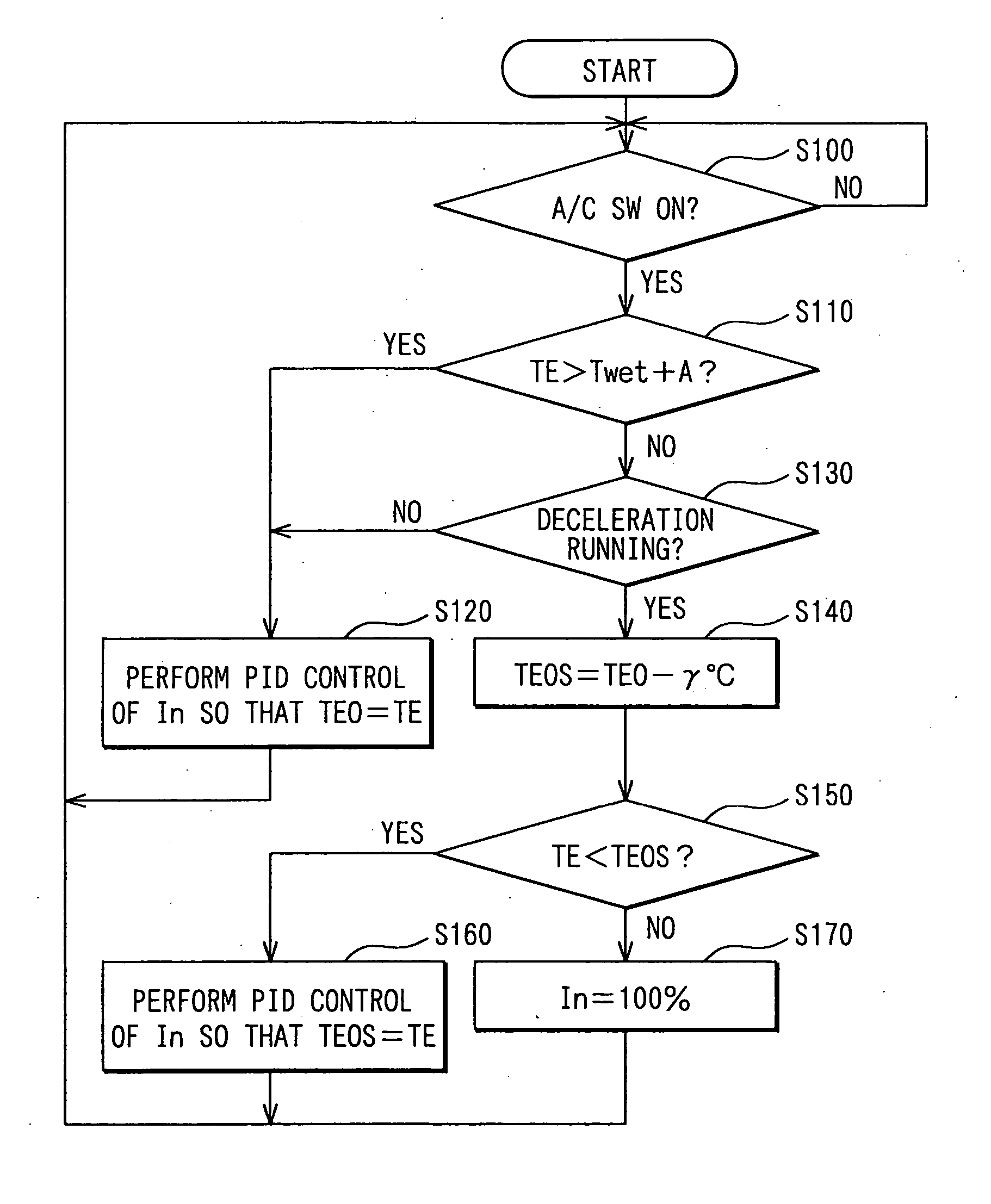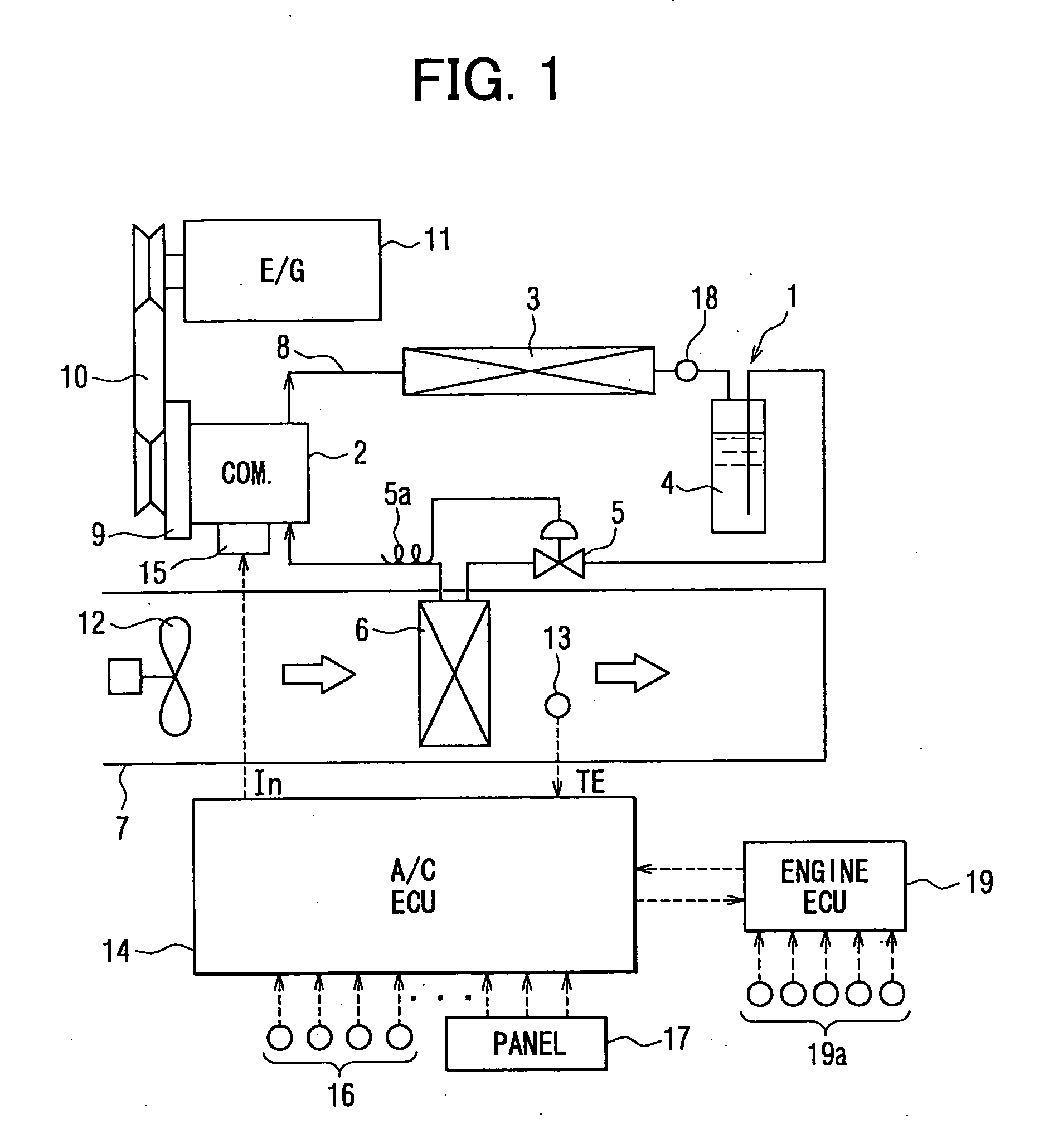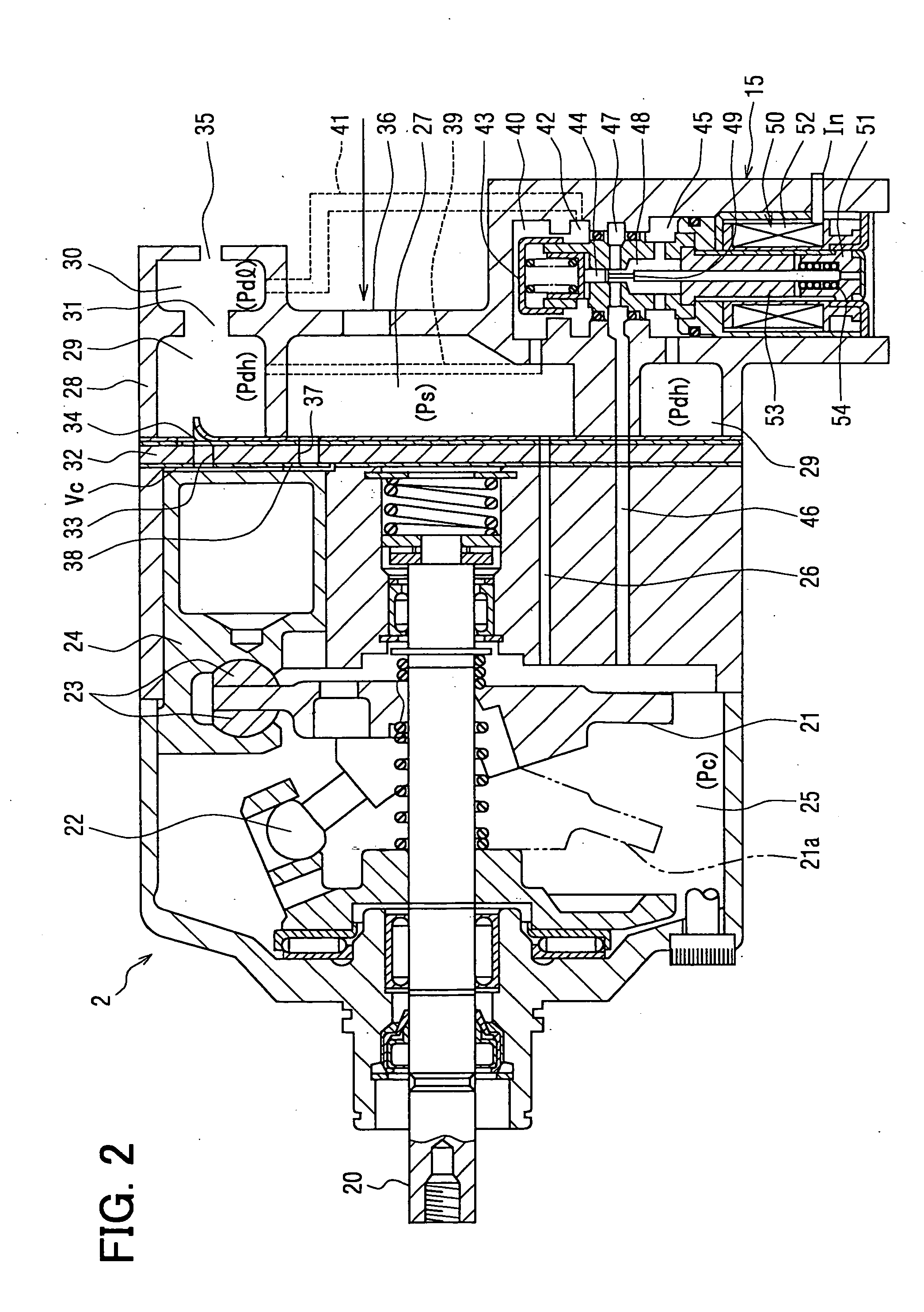Vehicle air conditioner with discharge capacity control of compressor
a technology of compressor and discharge capacity, which is applied in the direction of defrosting, lighting and heating equipment, domestic cooling equipment, etc., can solve the problems of insufficient recovery of deceleration energy and the inability to increase the discharge capacity of the compressor to the maximum capacity, and achieve the effect of recovering the deceleration energy of the vehicl
- Summary
- Abstract
- Description
- Claims
- Application Information
AI Technical Summary
Benefits of technology
Problems solved by technology
Method used
Image
Examples
Embodiment Construction
[0018] A preferred embodiment of the present invention will be described hereinafter with reference to the appended drawings.
[0019] As shown in FIG. 1, a refrigerant cycle device 1 of a vehicle air conditioner includes a compressor 2, a condenser 3, a receiver 4 (gas-liquid separator), an expansion valve 5 (decompression device) and an evaporator 6. The compressor 2 sucks, compresses and discharges refrigerant in the refrigerant cycle device 1. Super-heating gas refrigerant having high-temperature and high-pressure is discharged from the compressor 2, and flows into the condenser 3. In the condenser 3, refrigerant is heat-exchanged with outside air blown by a cooling fan to be cooled and condensed.
[0020] The refrigerant cooled and condensed in the condenser 3 flows into the receiver 4, and is separated into gas refrigerant and liquid refrigerant in the receiver 4. Generally, surplus refrigerant in the refrigerant cycle device 1 is stored in the receiver 4 as liquid refrigerant. Li...
PUM
 Login to View More
Login to View More Abstract
Description
Claims
Application Information
 Login to View More
Login to View More - R&D
- Intellectual Property
- Life Sciences
- Materials
- Tech Scout
- Unparalleled Data Quality
- Higher Quality Content
- 60% Fewer Hallucinations
Browse by: Latest US Patents, China's latest patents, Technical Efficacy Thesaurus, Application Domain, Technology Topic, Popular Technical Reports.
© 2025 PatSnap. All rights reserved.Legal|Privacy policy|Modern Slavery Act Transparency Statement|Sitemap|About US| Contact US: help@patsnap.com



